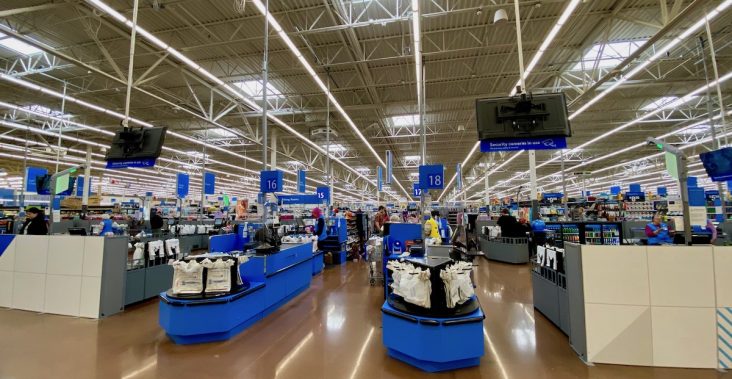Retail sales cool in May amid rising prices
by June 15, 2022 3:37 pm 681 views

The U.S. Census Bureau reported Wednesday (June 15) that consumers spent $672.9 billion on food and retail in May, down 0.3% from the prior month. Sales were up 8.1% from the year-ago period with most of the increase coming from higher prices.
The advance report on May sales indicates that consumers are spending at a slower pace as food and fuel prices continue to rise more than wage growth. Consumers are using more of their budgets to purchase fuel as gas station sales rose 10.19% between April and May. Sales are up 45% from a year ago. Average gasoline prices rose 48.7% between May 2021 and May 2022, according to the U.S. Bureau of Labor Statistics (BLS).
Food is another area highlighted in the report as inflationary. The Census Bureau reported food and beverage store sales totaled $79.861 billion in May, up 4.54% from April and up 17.5% from a year ago. Food prices rose 8.6% unadjusted through the first five months of this year, according to BLS.
Economists at Wells Fargo Securities were not surprised to see retail sales slow as consumer price inflation continues to push higher.
“Consumers feel the pinch of higher prices, evident in the persistent deterioration in consumer sentiment. To date, households have demonstrated uncanny staying power in the face of inflation, but with little signs of immediate relief from prices, this will only become more challenging,” said Sarah House, Wells Fargo senior economist.
The National Retail Federation strips out restaurant, gasoline and automobile dealer sales for its monthly retail sales report. NRF’s core retail sales were flat when compared to the prior month and up 6.7% year over year.
“Retail sales are reflecting Americans’ growing concern about inflation and its impact on the cost of everything from groceries to gas,” NRF President and CEO Matthew Shay said. “Retailers are doing what they can to keep prices down, but we continue our call on the administration to repeal unnecessary and costly tariffs on goods from China to relieve pressure on American consumers and their family budgets.”
NRF Chief Economist Jack Kleinhenz said there have been swings across spending sectors that reflect the impact of higher prices and supply chain disturbances. He said higher interest rates are expected to curb spending going forward.
“As inflation continues, consumers are looking for ways to stretch their dollars by saving less, tapping into savings accumulated during the pandemic and increasing their use of credit. There’s been little relief from inflation, and we expected some cooling off in sales in reaction to prices,” he said.
NRF’s sales numbers were up 5.4% unadjusted year over year on a three-month moving average as of May. Sales were up 7.3% year over year for the first five months of the year. The trade group’s report shows sales increased in eight of nine categories on a yearly basis, but nearly half of the categories reported slowing sales from the prior month. Consumers continued to spend on homes in May, with sales rising 0.2% from April and 8.8% from a year ago. Grocery and beverage store sales were up 1.2% month over month and up 7.1% year over year, according to NRF.
Consumers also spent a little more on clothing and accessories in May, with sales increasing 0.1% from April and up 8.5% from a year ago. Sporting goods store sales were up 0.4% month over month and up 1.2% year over year. General merchandise stores reported fractionally higher sales in May up 0.1% from April and up 0.9% from May 2021.
Health and personal care store sales reported a 0.2% dip in sales from April but they were up 5.8% from May 2021. NRF reported furniture and home furnishing store sales were down 0.9% from April but up 2.3% year over year. Larger ticket items like electronics and appliance sales fell 1.3% from April and they were down 4.3% from a year ago.
